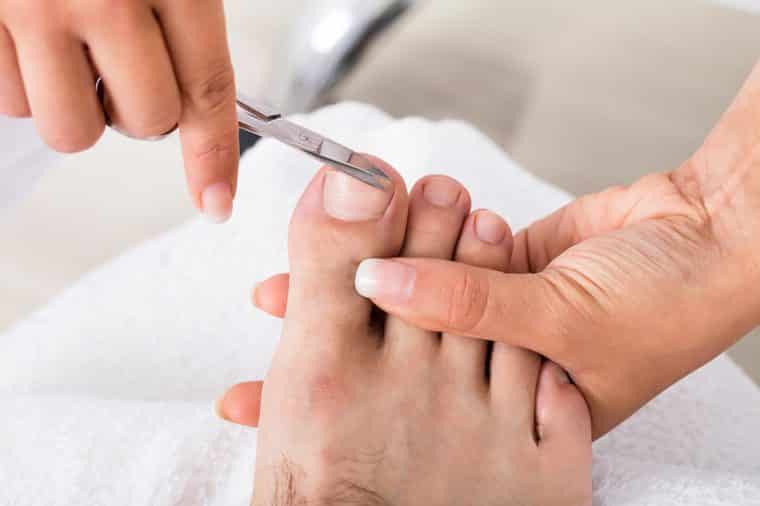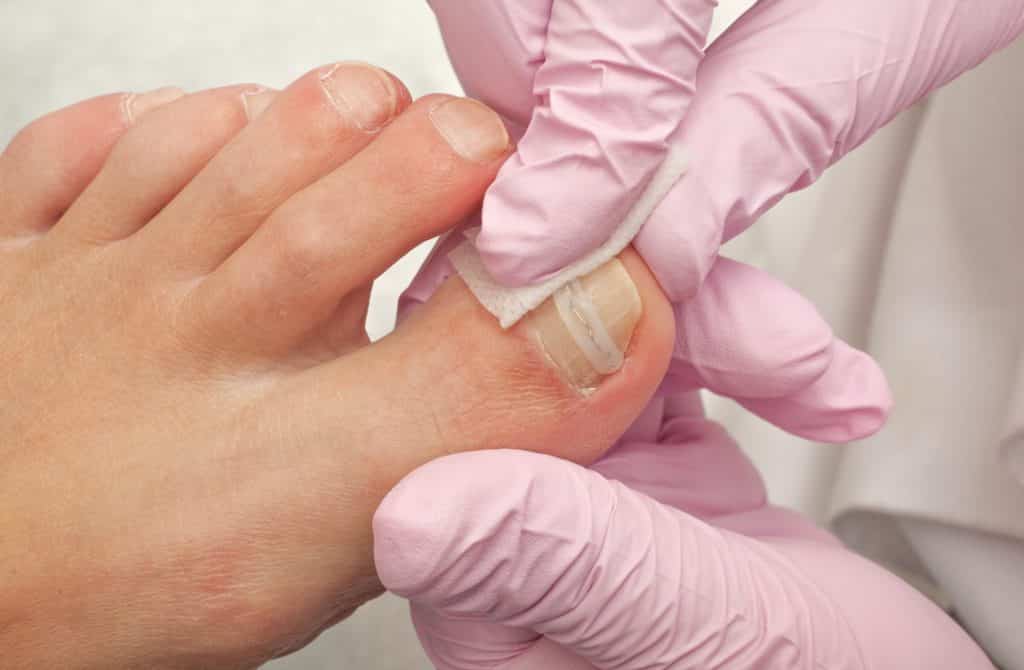Treatment and Removal of Ingrown Toenails
An ingrown toenail occurs when the edge of the nail pierces, or puts too much pressure on neighbouring skin, causing the nail to grow into the skin.
Painful and debilitating when left untreated, ingrown toenails run a high risk of infection or complications if left unaddressed by a trained podiatrist.
The causes of ingrown toenails range from incorrect trimming, curved nail edges, up to the damage caused by trauma or accidents.
At it’s worst, treatment for an ingrown toenail will require a simple procedure completed in the clinic by your experienced PridePlus podiatrist. However, most cases will only need a treatment plan that patients can carry out within the confines of their home.
Symptoms and Causes of Ingrown Toenails
The first sign of an ingrown nail will be a dull throbbing in the toe. Typically experienced in the big toe, the pain will grow more acute if the nail is left untreated, often becoming so painful that it seriously impacts a patient’s ability to wear footwear and move around freely.
There are several common causes of ingrown toenails. Shoes that don’t fit correctly and place pressure in either the large or small toe, incorrectly cutting the toenail can lead to rounding or nail spikes. Repeated trauma from using your foot to push or kick objects and accidents such as stubbing your toe or dropping a heavy object on it can cause the toenail to grow abnormally.
Problems with your feet, and in particular, your toenails, can also indicate an underlying illness or condition that is affecting blood flow to the body’s extremities.
The podiatrists at PridePlus will perform a thorough assessment of your toe to diagnose what is causing the ingrown nail, and prescribe a treatment plan to end the pain and discomfort it creates.


How to Treat an Ingrown Toenail
If you suspect you have the beginnings of an ingrown toenail that is yet to break the skin, soaking your foot in warm water with standard table salts and gently pulling the skin back off the nail can be enough to prevent the condition getting worse.
However, if the ingrown nail has progressed to a throb or acute pain, call the team at PridePlus for an assessment straightaway.
The pain and discomfort of ingrown nail compounds as its condition worsens, and if left untreated, can deteriorate into infection and require surgery. If the area has contracted an infection, your podiatrist may also need to refer you to a doctor for antibiotics.
If the ingrown nail has progressed passed simple treatments it may require a minor corrective surgery called a Nail Avulsion. During nail avulsion treatment your podiatrist will inject the toe with anaesthetic, and remove part of the nail, or the whole nail and the nail bed, dependent on the severity of the issue and your personal preference.
How to Prevent Ingrown Toenails
There are a number of things you can do to avoid ingrown toenails:
- Wear shoes with a large toe box that will not compress your toes
- Trim your nails straight across rather than rounding the edges and never trim back past the end or your toe
- If you suspect you have the beginnings of an ingrown toenail see the PridePlus team as soon as possible to prevent the issue escalating
If you have an ingrown toenail, talk to one of PridePlus Health’ highly trained podiatrists and be back on your feet in no time!



